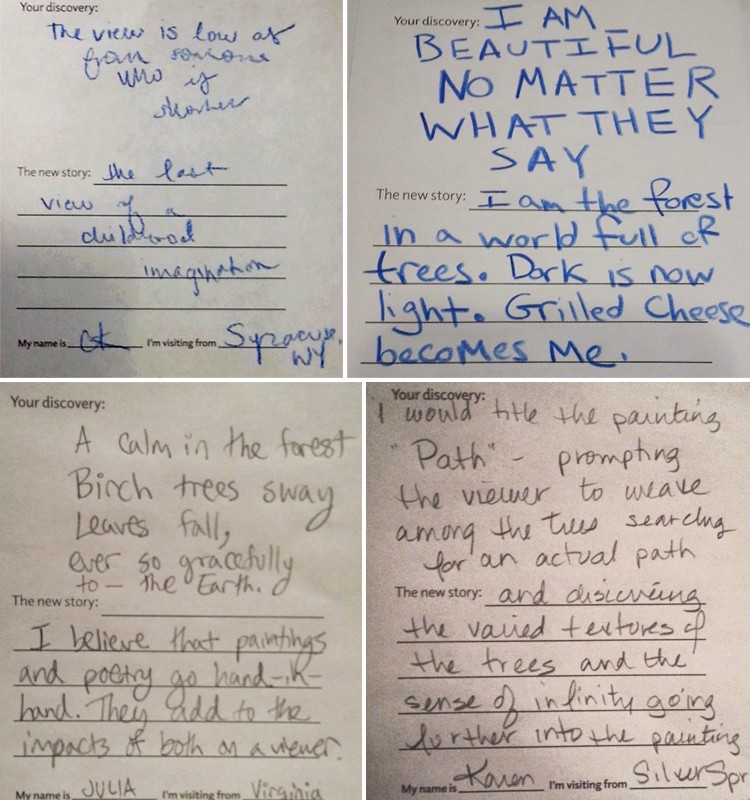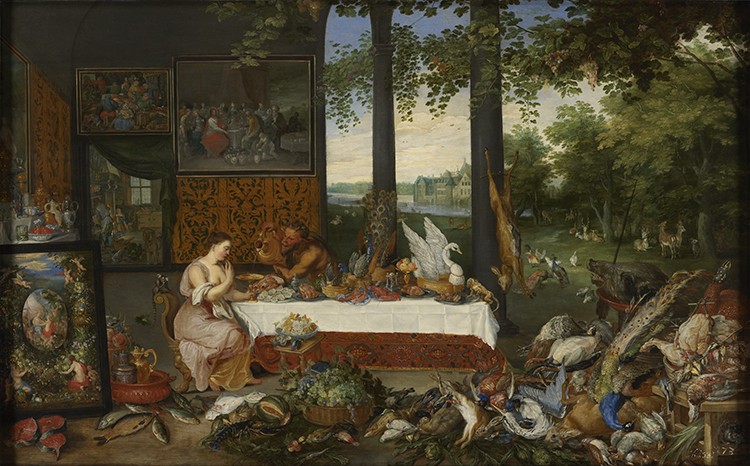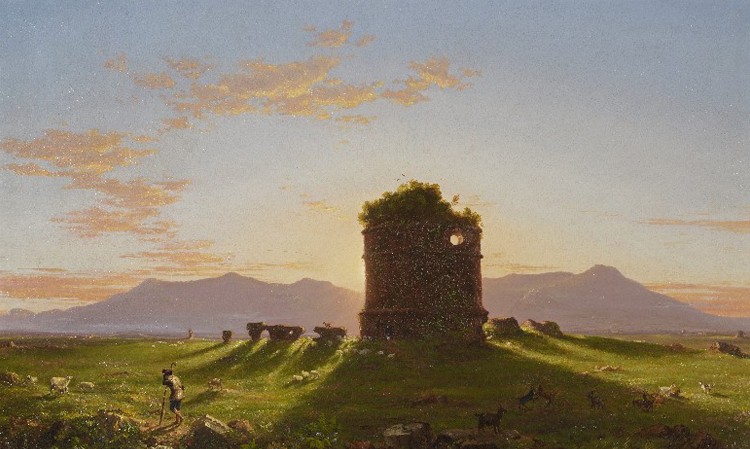
Gustav Klimt, Birch Forest, 1903. Oil on canvas, 42 1/4 x 42 1/4 in. Paul G. Allen Family Collection
In the Seeing Nature exhibition, the Phillips invites visitors to contribute new, imagined conservation discoveries at our interpretive station, “Seeing Beyond the Frame.” For the month of March, exhibition-goers responded to Birch Forest, painted by Gustav Klimt in 1903.
Perhaps due to the poetic quality of Klimt’s work—the way shapes seem to shift from observed forms to an abstracted tapestry of patterns—or perhaps inspired by the recent poetry reading with Mark Doty and Aimee Nezhukumatathil, poetry abounds in this month’s responses. See more or share your own ideas with #SeeingNature.

Inspired by the poetry of images in the exhibition, visitors have submitted a wide variety of poetic responses to Klimt’s Birch Forest.
asd



